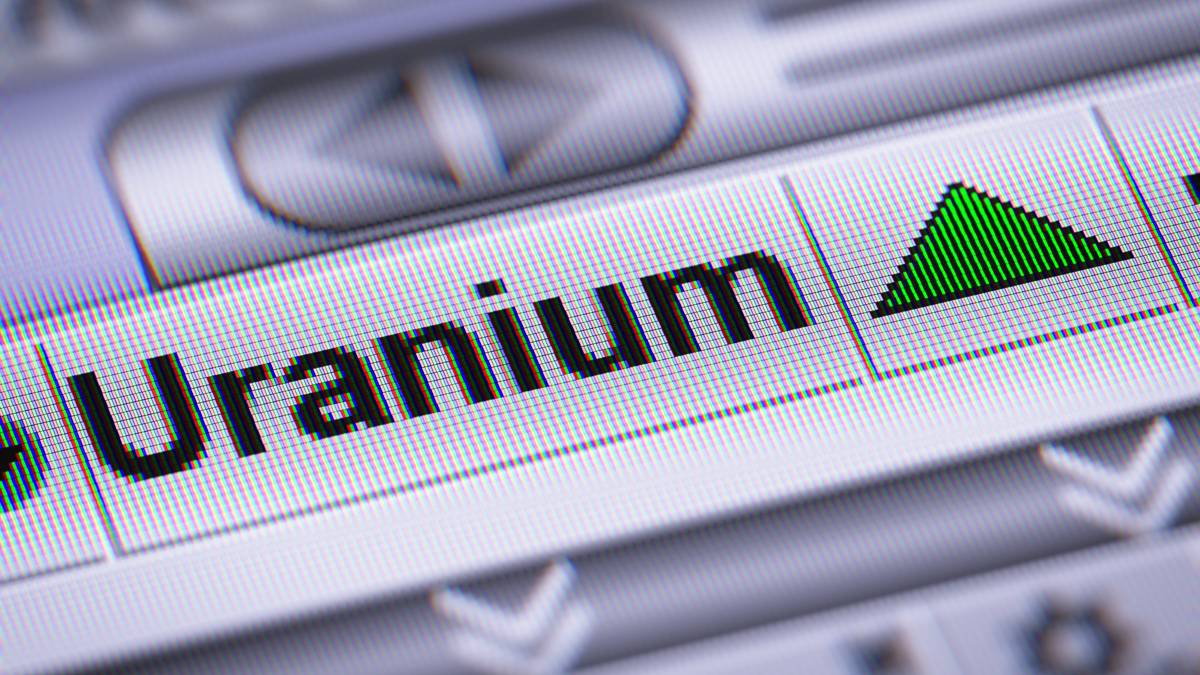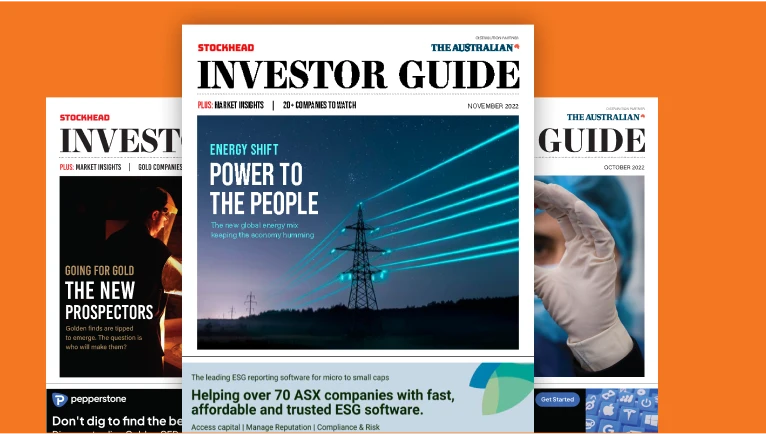The drivers behind a long overdue re-rate for uranium equities

Uranium equities are positioned to run, with some analysts forecasting a price rebound back to US$100/lb. Pic: Getty Images
- Uranium equities are poised to pounce as spot prices edge higher
- Outlook for nuclear and mining reform in the US has Recharge Metals smiling
- Microcaps poised to join mid-tier in sector re-rate
After drifting lower for the first few months of this year, the uranium spot price appears to have bottomed, providing a catalyst for equities.
Uranium surged to more than US$106 per pound in January last year but by April this year, it had fallen to closer to US$60/lb.
Taylor Collison analyst Joshua Baker said equities had generally tracked the spot price over the past 18 months.
“So, whilst spot might not necessarily matter from an economic perspective of the companies, it does matter from the equity trading or investing side as you’ll generally find that the equities will correlate to the prevailing spot price,” he told a webinar this week.
With the spot price back over US$70/lb, Baker believes the downtrend is over and we’re now in a consolidation phase.
“I think we’re generally going to see positive news get bid in this consolidation phase, and these sort of phases do present interesting opportunities from an investing perspective, because you then get to buy with a base in the price,” he said.
“You’re not worried that [the price] is going to keep going down as much as you might have been six months ago, and then you get to look forward to what those catalysts are that might actually drive a re-rate in the spot price, and then the equity prices going forward.”
Baker pointed out that the sell-off in uranium equities had been aggressive when the spot price fell.
The Global X Uranium ETF has doubled since April, when uranium was excluded from US tariffs, but Baker said that didn’t tell the whole story.
“When you go through and digest what’s actually driving that, Cameco is almost a quarter of the index, and a lot of that’s probably just the fuel business and the Westinghouse side of it, given the prospectivity of builds,” he said.
“And then most of the other top 10 sector-linked companies are related to SMRs, technology or part components, so a lot of mining equities have still been left behind.
“We’re starting to look forward to the next catalyst which will hopefully drive that re-rate that you would have by increasing allocation to uranium equities.”
Mid-caps enjoy renewed attention
Even with a bit of a dip in the past few weeks, uranium producers and developers have rebounded since “Liberation Day” in the US.
ASX leader Boss Energy (ASX:BOE) is up around 85% since April 7, while Paladin Energy (ASX:PDN) more than doubled as it makes a comeback from operational issues at its Langer Heinrich mine in Namibia before a 10% hit Wednesday after FY26 guidance disappointed investors.
Large-cap Canadian developer NexGen Energy (ASX:NXG) is up by about 64%, while the trio of African developers – Bannerman Energy (ASX:BMN), Deep Yellow (ASX:DYL) and Aura Energy (ASX:AEE) – have also enjoyed substantial gains.
However, all are still trading well below the highs seen last year.
Analysts Jon Scholtz and George Ross from Argonaut see the uranium spot price rallying to US$100/lb by the end of this year.
“We note that there continues to be multiple catalysts for uranium equities in the near-term,” they said last month.
“These catalysts include: additional demand from data centres and AI, lift in spot pricing driven by producers covering contract books and financial players buying pounds, a close out of shorts; and FID decisions for uranium developers.”
US-focused juniors in limelight
The renewed enthusiasm for uranium equities is yet to trickle down to the explorers, particularly those with market caps of less than $10 million.
Juniors in the US are particularly hopeful of some near-term attention, given the Trump Administration’s push to boost its uranium and nuclear capacity.
Recharge Metals (ASX:REC) holds the Carter uranium project in the US state of Montana but has been quiet the past few months.
Managing director Felicity Repacholi said it was for good reason, as the company carried out field surveys and permitting.
“Essentially all the tasks enabling us to get on the ground and start drilling,” she said.
The Carter project hosts the Acadia deposit, which has a historical resource of 3.7 million pounds at 1250 parts per million uranium oxide, and the Mindy deposit, which has a historical resource of 1.4Mlb at 1560ppm.
“Why Recharge and why now? We believe that uranium in the US is the right place at the right time, so our US uranium exposure aligns with this next wave of US energy and industrial policy that we can see coming through,” Repacholi said.
“As a low market cap company, at the moment we are providing maximum leverage to exploration success, news flow, discovery and any of this policy support that will flow through from the US system.”
Pioneer Lithium (ASX:PLN) has been particularly busy this month, which has resulted in a plus-20% boost in its share price, though its market cap is still less than $6 million.
As well as picking up prospective uranium ground in Namibia and Botswana, Pioneer just completed the first phase of a soil sampling program at its Skull Creek uranium project in Colorado.
Assays are pending ahead of a second phase, with the results to help the company define drill targets.
Aussie microcaps ready for re-rate
Koba Resources (ASX:KOB) has a market cap of just over $7 million, and its share price, which had once closely tracked the uranium spot price, had fallen since April.
“We’re really expecting that [gap] to close in the near term as uranium fundamentals continue to improve, and the uranium price gains momentum,” Koba managing director Ben Vallerine said.
Koba’s Yarramba project in South Australia is adjacent to Boss’ Honeymoon uranium mine, and Koba is planning to restart drilling this quarter to follow up previous high-grade results.
Already drilling in SA is Core Energy Minerals (ASX:CR3), which is leveraged to any success given its market cap of less than $5 million.
The 3000m aircore program is about two thirds complete with the presence of uranium mineralisation already confirmed.
Initial samples have been sent to the lab for assaying with results expected in about eight weeks.
Heavy Rare Earths (ASX:HRE) recently acquired projects in SA, including the Radium Hill project.
Recent rock chipping returned grades of up 9068ppm uranium oxide, as well as scandium and rare earths.
The company is aiming to drill later this year.
At Stockhead, we tell it like it is. While Pioneer Lithium, Recharge Metals, Aura Energy, Heavy Rare Earths and Core Energy Minerals are Stockhead advertisers, they did not sponsor this article.
Related Topics

UNLOCK INSIGHTS
Discover the untold stories of emerging ASX stocks.
Daily news and expert analysis, it's free to subscribe.
By proceeding, you confirm you understand that we handle personal information in accordance with our Privacy Policy.








